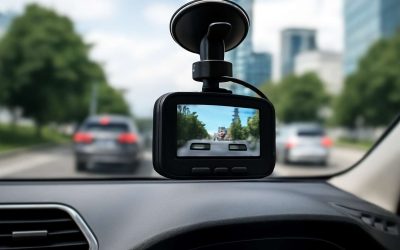
A dash cam is like a second pair of eyes for your car that can help to prove what really happened in the event of an accident or other incident. They can be particularly useful for disputing speeding tickets or providing evidence to support insurance claims. They can also provide useful footage when parking the car, especially if it gets hit or vandalized.
There are many different types of dashboard cameras available to purchase, ranging from simple front dashcams to dual-camera systems with built-in rearview cameras and a touchscreen interface. However, the most important feature of any dashcam is its ability to record clear video. Many dash cams try to distinguish themselves in a crowded market with features such as AI driver assistance alerts, cloud backup and even a supercapacitor power source. While these are all interesting innovations, they’re not essential to getting a good dash cam.
The best dashcams are simple and easy to use. They typically have a fixed-lens digital camera that records in high definition. Many feature a wide-angle lens for recording more of the road and surroundings, although this can also distort objects that are further away. A built-in GPS sensor can track your driving time and location, and some models allow you to manually lock or save emergency videos and a picture file from the camera’s memory.
Most dashcams come with a cable that plugs into your car’s 12V socket. You can mount the camera on the dashboard or windshield using a suction cup. Some states have laws against dash cams that display an always-on screen, so look for a model without one or with an option to disable the display while driving.
Some cameras can be connected to your smartphone, allowing you to view and share video with others. Often, these require a special app for viewing and editing. Some also enable remote operation of the camera from your phone, which can be handy if you need to quickly capture a quick video or still frame.
While dash cams are generally fairly affordable, the price of a premium model can rise above $1,000. Some include extra features such as a thermal imager for detecting heat sources such as hot asphalt or fog. Others may have a night vision mode or the ability to connect to a rear camera. If you’re going for a top-of-the-line model, consider looking for one that supports a high-capacity microSD card.
Most aftermarket dash cams record to a standard SD card that can be removed and inserted into a reader attached to your computer to retrieve video. Some of these models also store video in the cloud, requiring a separate subscription to access. Many also offer a parking mode that can send the recorded video to your phone if the car is moved while you’re not around, which can be helpful if you’re worried about your vehicle being stolen or vandalized. Others have a built-in GPS sensor that tracks your driving time and location, which can be useful for tracking down your vehicle if it’s ever stolen.



0 Comments